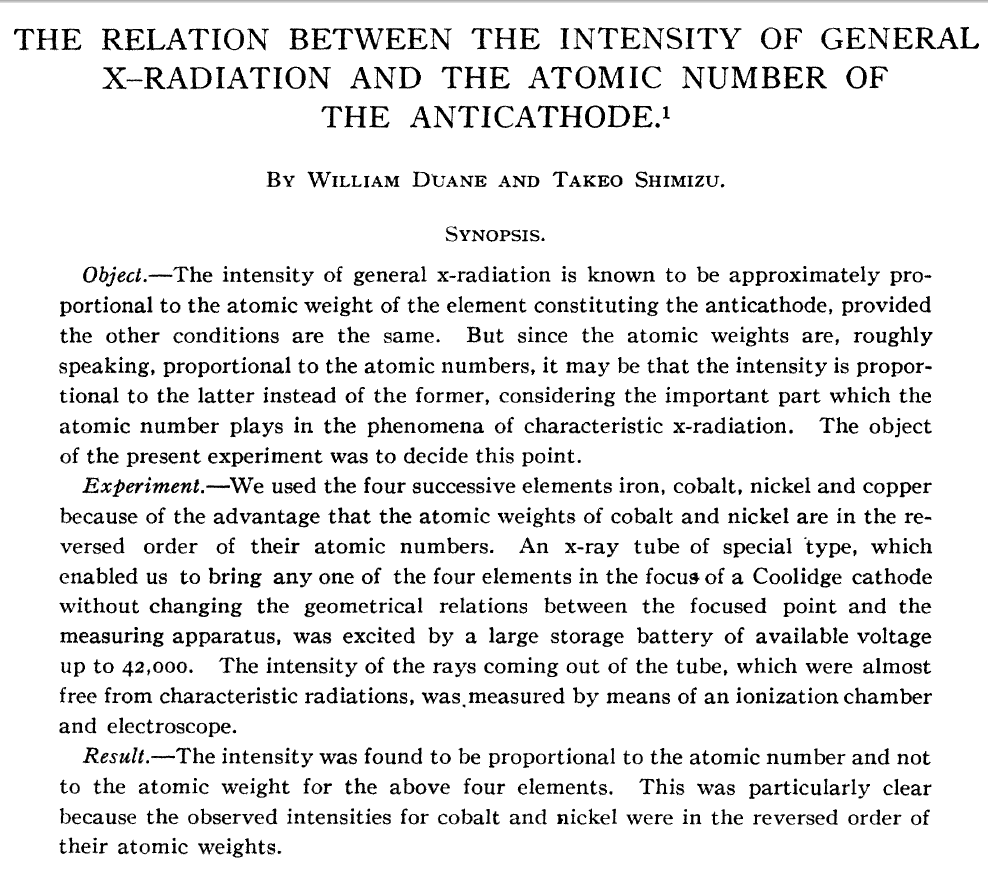One of the co-authors (Ben McMorran) of our paper published last year on calculating average Z for backscatter and continuum productions in compounds:
https://academic.oup.com/mam/article-abstract/29/4/1436/7224307recently found an old (1913!) paper by William Duane (yes the Duane of the Duane-Hunt limit), that we really wish we had been able to cite in our paper. Here is the first page, and please read the last sentence carefully.

I've attached the full paper below but I'm not sure how Ben found it because in Google Scholar all I can find is this biographical paper which only mentions this paper:
https://www.nasonline.org/publications/biographical-memoirs/memoir-pdfs/duane-william.pdfAnyway, what is so cool about this paper from 1913 is that we have for decades accepted the mass averaging assumption of average Z for compounds as noted in every modern textbook on microanalysis, when in fact the early founders of our field apparently already knew the assumption of mass averaging to be false (albeit though only tested on pure elements in the Duane paper).
But the really clever aspect to this paper by Duane and Shimizu is that it takes advantage of the fact that going from Co to Ni the atomic number increases, but the atomic weight *decreases*!

In fact there are two other places in the periodic table where this swapping of the trend in atomic number and atomic weight occurs. See if you can think of them before looking at a periodic table- makes for a great science trivia question... one involves Mendeleev and the other is important to biology and mutation rates!
So yes, Duane and Shimizu only showed that characteristic x-ray production correlates with atomic number, but we've know since the early 2000s (Donovan et al.) that continuum and backscatter productions also follow atomic number rather than atomic weight, from isotope measurements (actually we also performed characteristic x-ray measurements on isotopes in the early 2000s, but we only (finally) published that characteristic x-ray data in our paper from last year).
So where did we all (historically in the field microanalysis) go wrong and start ignoring this early work by Duane and Shimizu which clearly demonstrated that atomic weight is irrelevant to our field?
Hey, it's electrodynamics, all the way down...
